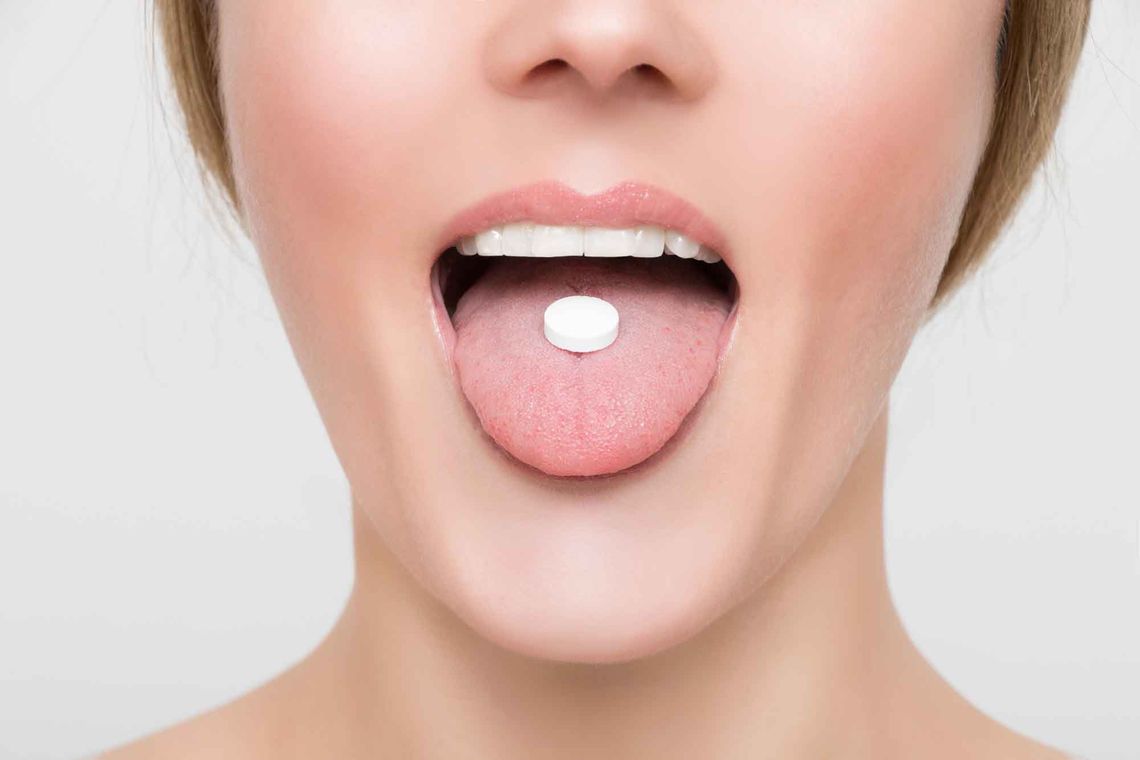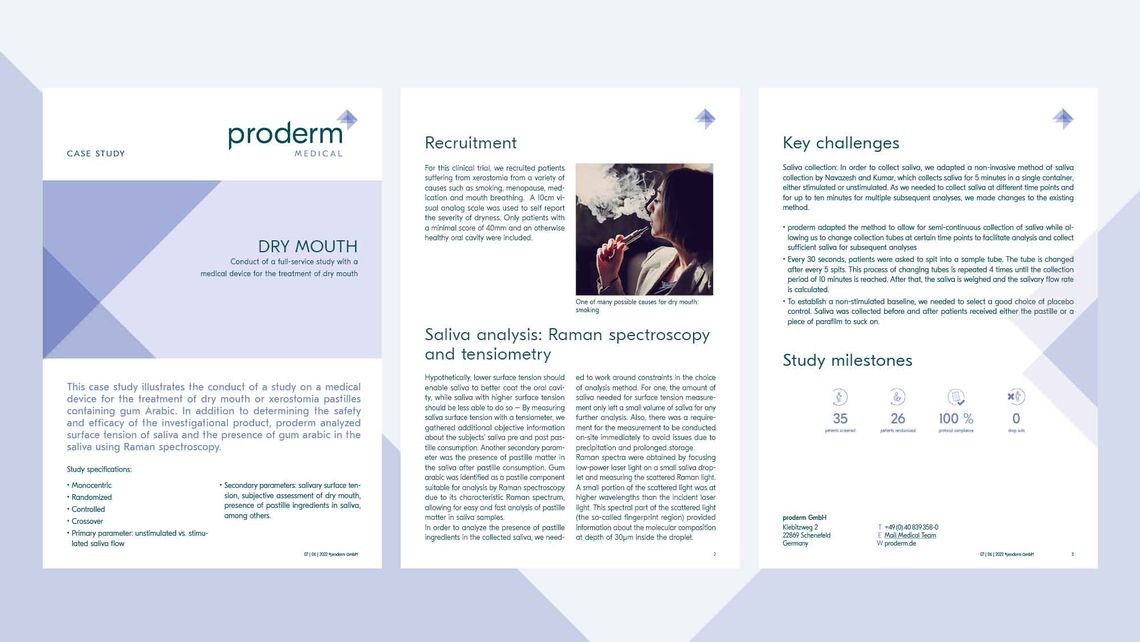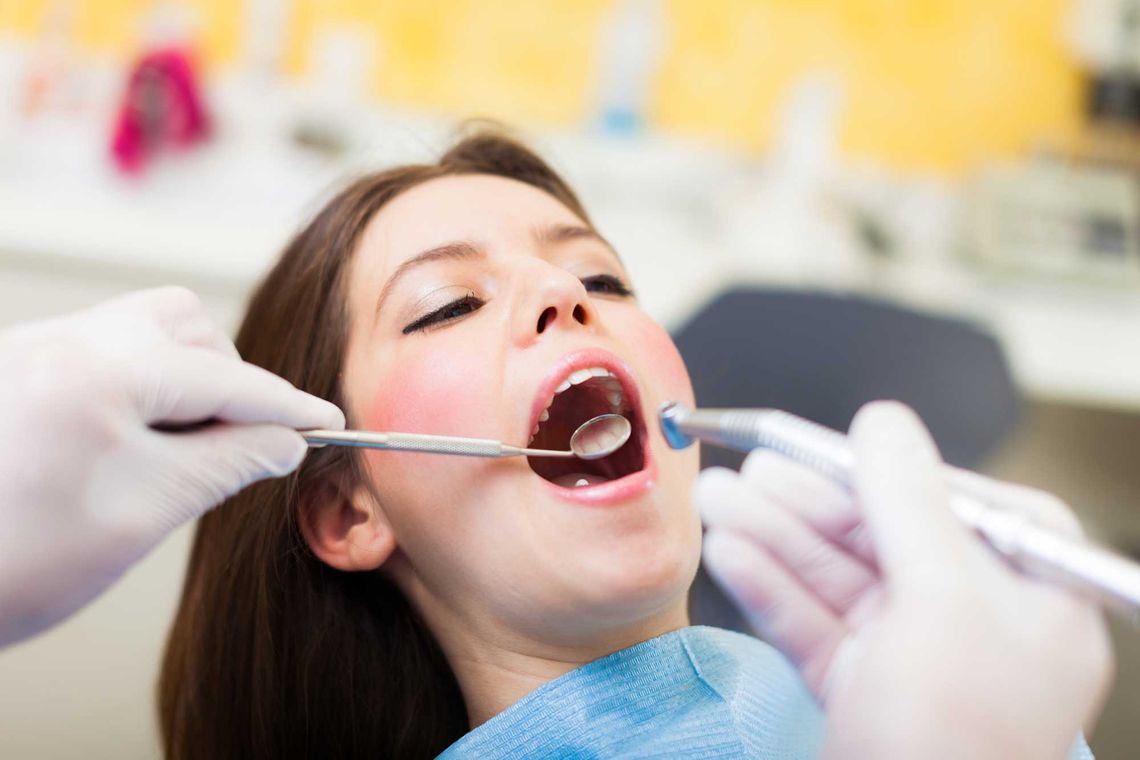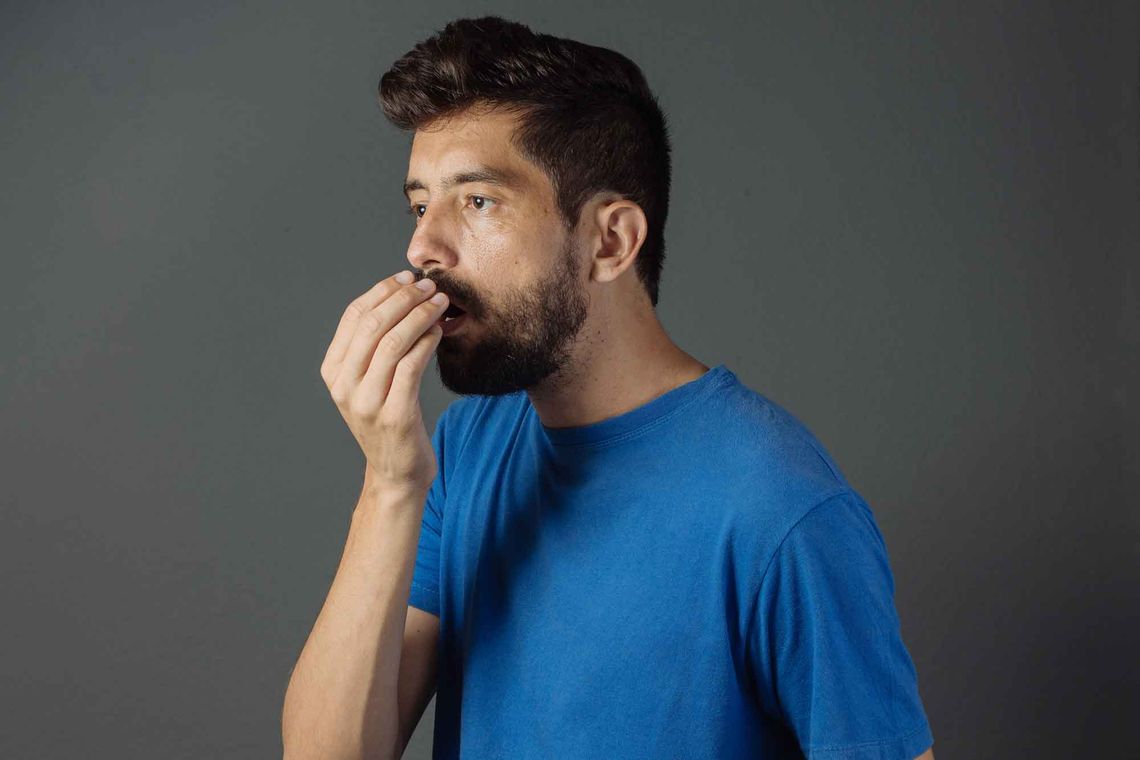Dry Mouth: Xerostomia studies at proderm

Dr. Dorothea Wilhelm
Senior Medical Scientific Consultant
At proderm, we think that it is important to share our work with our sponsors and partners, especially when we feel that there is an interesting story to tell. I would like to introduce you to a case study of a clinical trial with a medical device for xerostomia, also known as dry mouth, which we conducted at proderm a couple of years ago. The aim was to show a beneficial effect on dry mouth symptoms.
What is so special about the case study described?
Initially, people are often surprised that a pastille can be a medical device. At first glance, a pastille contradicts the general idea that a layperson has of a medical device. People usually imagine a machine, an implant, etc. But a pastille can be a medical device if its effect is purely physical. As the product's mechanism of effect on dry mouth symptoms works through better wettability of the oral mucosa, our sponsor was quite clear from the get go that this product was a medical device!
On the methodological side, another feature I would like to highlight is that we have combined state-of-the-art Raman spectroscopy for salivary analysis with a very simple and straightforward method we adapted from Navazesh and Kumar for the measurement of salivary flow and collection of salivary sample.
This sounds simple, but we needed to follow a certain protocol that turned out to be not so simple after all!
Every 30 seconds, the test participant must spit out their saliva into a tube provided in a sample container. These tubes are changed after every 5 spits. This total process of changing tubes is repeated 4 times until the collection period of 10 minutes is reached. After that, the saliva is weighed and the saliva flow is calculated for different time points.
This method is used both before and after chewing the pastille. And nothing is left to chance when chewing the pastille - The product was chewed to the beats of a metronome¹ to standardize the chewing speed.
Since we needed a very fast analytical method that could be performed with very small sample volumes, we analyzed the ingredients with Raman spectroscopy and found that gum arabic has a Raman spectrum that can be used to measure the presence of pastille substances in saliva. Raman spectra are obtained by focusing low-power laser light on a small saliva droplet and measuring the Raman light scattered by the laser focus. A small portion of the scattered light is at higher wavelengths than the incident laser light. This spectral part of the scattered light (the so-called fingerprint region) provides information about the molecular composition of the sample. The Raman spectrum is recorded at a depth of approximately 30 μm in the saliva droplet.
These two so very different methods, from very simple to high-tech , show that clinical trials need excellence and attention to detail on *all* levels, especially if things seem rather straightforward!
¹ I personally provided my private metronome! :-)







